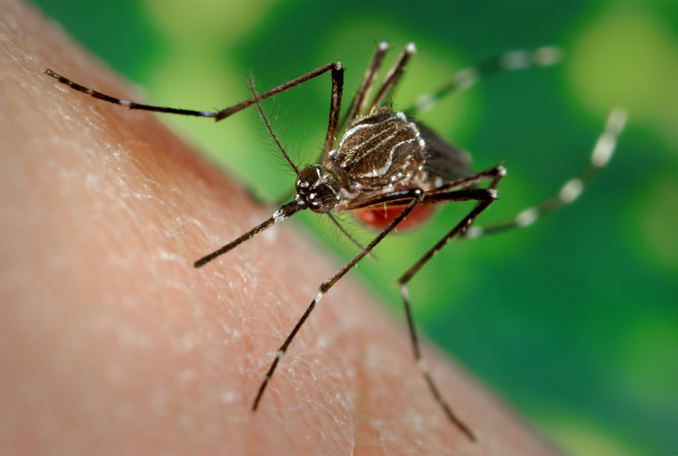
In late 2015, public-health authorities around the world were alerted to a new and rapidly spreading epidemic of Zika-virus infection associated with an elevated incidence of microcephaly—a birth defect marked by small head circumference and damaged brain—in newborns of mothers infected during pregnancy. An elevated incidence of Guillain-Barré Syndrome was also reported among Zika-infected adults; this syndrome is a rare neurological disorder characterized by advancing paralysis, generally reversible over time but sometimes requiring complex life-support.
One constant in many recent infectious-disease outbreaks—including Zika, dengue, chikungunya in the United States and its Territories, and yellow fever in Africa—is transmission of the viruses by mosquito vectors, most often Aedes aegypti, the yellow-fever mosquito. Aedes aegypti mosquitoes can be found over much of the hotter regions of the United States and its Territories. Other mosquito species such as Aedes albopictus, the Asian tiger mosquito, may also be able to transmit Zika, although to much less extent than Aedes aegypti. Zika can also be sexually transmitted.

In response to urgent concerns regarding this new public-health emergency, in early 2016, President Obama directed OSTP and Federal agencies to better coordinate efforts to identify new science and technology (S&T) approaches to vector control to prevent Zika and other pathogen transmission by mosquitoes. Today, the National Science and Technology Council’s Task Force on Science and Technology for Zika Vector Control is releasing a Strategy for Integrating Best Practices with New Science to Prevent Disease Transmission by Aedes Mosquito Vectors as part of a series of responses to address Zika. The Strategy details S&T opportunities in five primary domains:
- improved social and behavioral science for community engagement in mosquito control;
- efficacy and implementation evaluation of vector-control strategies;
- development of new vector-control techniques;
- vector-control workforce development; and
- other research needs on mosquito biology and ecology.
The vector-control S&T recommendations in this Strategy complement additional directives from the President to Federal agencies to expedite the development of Zika diagnostics, therapeutics, and vaccines; implement current vector-control actions; and provide international coordination and support. Many of these activities were supported by the September 29, 2016, Congressional passage of the Zika Response and Preparedness Act, which appropriated $1.1 billion “to prevent, prepare for, and respond to Zika virus, health conditions related to such virus, and other vector-borne diseases, domestically and internationally.”
Without improved vector-control techniques that are affordable and acceptable to communities, Aedes aegypti and other mosquito-vector species will remain a threat capable of transmitting Zika, dengue, chikungunya, and yellow-fever viruses, as well as the next, as yet unknown, vector-borne outbreak in this crowded, interconnected, and rapidly mobile world.
Jo Handelsman is Associate Director for Science at the White House Office of Science and Technology Policy.
Bruce Rodan is the Assistant Director for Environmental Health for the White House Office of Science and Technology Policy.

